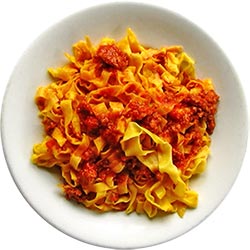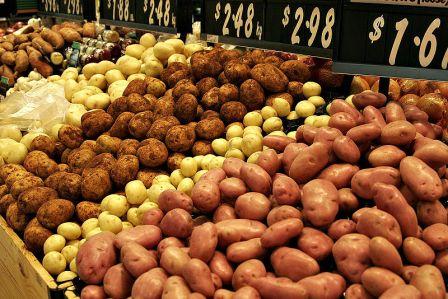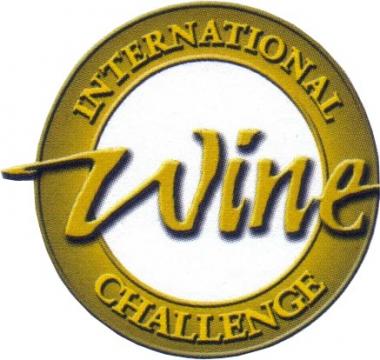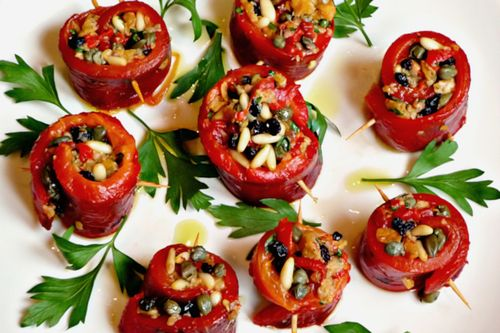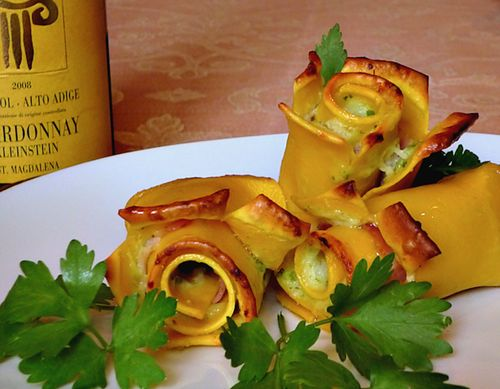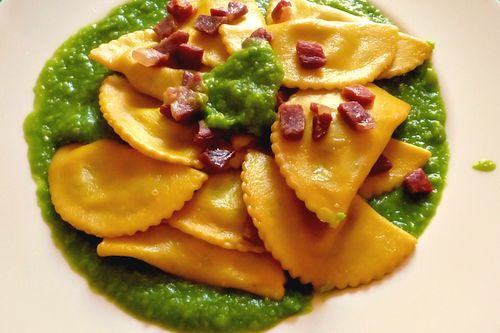Sugo di Piselli, Prosciutto Cotto, e Panna
Pasta Sauce with Peas, Ham, and Cream, in the style of Emilia-Romagna
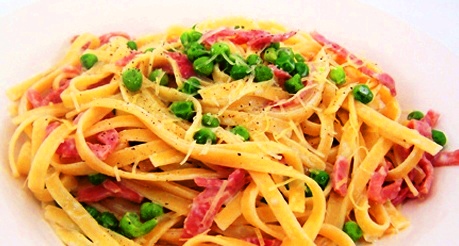
.
This Easter I made an All-American holiday brunch for my sister, nephew (the creator of this website), and his lovely new wife Liz. We feasted on ham with an orange-Dijon glaze, scalloped potatoes, fresh fruit drowned in Moscato, and gargantuan homemade cinnamon rolls.
Of course we had lots of leftovers, especially ham. With fresh early peas now finding their way into farmers’ markets, what better way to enjoy leftover ham than Sugo di Piselli, Prosciutto Cotto, e Panna [Pasta Sauce with Peas, Ham, and Cream]?
One glance at the ingredients and you quickly surmise this pasta dish is from Emilia-Romagna. Very rich and bursting with flavor, the sauce traditionally welcomes the spring season. And it’s easy to make!
If you’re not able to find fresh peas, you can always substitute frozen early peas. You can use either fresh or dried pasta — see the suggested shapes below.
Ingredients
- 2 pounds fresh early peas (in their pods) OR 1 cup frozen early peas (thawed)
- 4 tablespoons unsalted butter plus additional 1 tablespoon to mix with the pasta
- ½ cup onion, chopped
- ¼ cup ham, chopped into matchsticks ¼ inch wide
- ½ cup heavy cream
- Salt
- Black pepper, freshly grinded
- ½ cup Parmigiano-Reggiano cheese, freshly grated
Making the Sauce
- If you’re using fresh peas, shell from their pods; soak in cold water for five minutes, then drain.
- Heat two tablespoons of the butter in a saucepan on medium high heat, add the peas and ¼ cup of water. When it reaches the boiling point, lower the heat to a gentle simmer.
- Simmer for 10 minutes then add salt. Continue cooking until the peas are tender. The time needed to reach tenderness can vary wildly, depending on the freshness of the peas, and how young they are.
- Meanwhile, heat two tablespoons of the butter on medium in a large skillet and sauté the onion until it becomes lightly golden. (If you are using frozen peas, begin the recipe at this point, using four tablespoons of butter to sauté the onion). Add the ham and stir for about a minute.
- If using frozen peas, add them to the skillet after the onion is golden and the ham has been added. If using fresh peas, add to the sautéed onion and ham, then cook an additional five minutes, stirring occasionally.
- Add the cream and grind fresh black pepper liberally. Turn the heat up to high (don’t worry, if the cream is fresh it will never curdle), stir frequently and let reduce to a fairly dense consistency.
- Boil and drain the pasta. Swirl a tablespoon of butter into the pasta, then toss with the sauce and grated Parmigiano-Reggiano
Suggested Pasta

.
- The most traditional pasta for this sauce is fresh garganelli, although dried garganelli also works well
- Other fresh pasta suitable for this sauce include fettuccine or tagliatelle
- Dried pastas for this sauce include conchiglie [shells], penne, or maccheroncini
.
Related:
Pasta all’Uova Fatta in Casa: The Joy and Satisfaction of Making Homemade Egg Pasta
.
